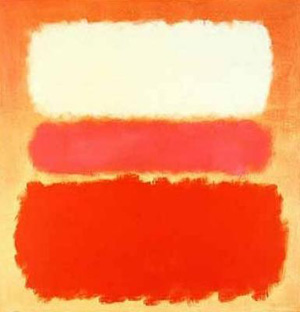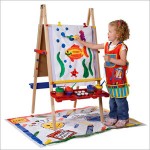
White Cloud Over Purple - Mark Rothko 1957
This morning I had an interesting exchange on Twitter with artist Dustin Wallace. The discussion centered on the importance of your story as an artist as a marketing and selling tool and it got me thinking later how successfully selling art has most of the same characteristics as successfully selling anything.
In a typical free market a mainstream business will say, “What does the market want to buy or what problem does the market need to solve? And how can I create and market something which will fulfill that need profitably?”
A commercial artist, decorator, or designer will generally ask the same questions within their sphere of expertise. For example, I attended the Park City Kimball Arts Festival in 2004 and one of the artists who was selling very successfully had created all her pieces with a focus on green color themes because that was what the market was looking for that year. That, to me, is commercial art. And very wonderful too.
Artists without the “commercial” qualifier are different though because their role is not just to fulfill a need but also to be a defining point or spotlight for the times in which they live. In my mind, Steve Jobs (Apple CEO) is something of an artist because he reaches in and helps us understand the new directions the world will take with technology. It’s a meeting point between dreams, creativity, and possibility that only artists comprehend. If you look to the great artists of history – the ones we remember – they all spent time at that defining point. Talent is amazing – and amazingly rare – but talent alone doesn’t make a great artist.
Artists are different to mainstream businesses in one important way. As we mentioned earlier, a business looks for a market need and then finds and sells a product or service to fulfill that need. An artist on the other hand sees or perceives something within, brings that out onto the canvas or bronze or glass or photograph and then says, “This is what I have discovered – how can I find an audience who will appreciate and buy this gift?”
So – how do you market that??
There are many answers! But the one I want to focus on today is your story. I don’t mean your artist statement or your bio – I mean what is the story that will inspire or interest me to want to support your vision with my cash? Suddenly it all starts to sound remarkably the same as a start-up business looking for investors – and that is exactly what you are! Start-up businesses often resemble the artist model because they too are frequently looking for a way to commercialize a new invention or technology.
I’ve worked in business for quite a few years and I’ve seen new start-up businesses pitched to investors and I’ve actively sold new business ideas and directions within larger corporations. In every case there are baseline items which have to be there – you don’t bother starting the presentation to the board if you can’t build a reasonable expectation of profit. In the case of an artist, I’d equate that to saying that you must have talent and work hard and be prolific.
But beyond those primary requirements what sells the Board of Directors or Venture Capitalists is the same thing that will sell your collectors and followers – your story. One of our basic needs as humans in order to grow and prosper is to feel that we are in some way “hitching our wagon to the stars” or leaving a legacy in the footprints we make on planet Earth. All humans feel that need in some way.
Venture Capitalists want to be at the defining edge of life – that’s what gives them the juice. Of course they want to make lots of money too but they could do that in many ways. That’s why they are always funding new technologies and new directions like the whole green movement.
Art collectors want to make lots of money too. But they also want to be associated with having helped great art and new art forms burst forth into the world. They want to buy into your story and help you succeed!
If you think of your potential art collectors as venture capitalists for your art career, what would be in your 30 minute presentation to get them inspired enough to hitch themselves to your wagon? Think about that! And don’t plan on having much art in that presentation – I’m talking story only.
One final point. New business start-ups often have to pitch to many many VCs before they get funded. It has to be the right chemistry and alignment of philosophy. So get your story clear and authentic first and then be patient. And have fun with developing it – because if you’re not having fun we certainly won’t be!
We’ll go into more details and structure on the whole story theme in future articles.


Excellent article. Love the analogy. Very helpful.
Susan
Over at "RaisinToast"
I've never thought of an artist being like a business at all before. Your article really opened my mind to thinking differently. I'd like to get some more help with crafting my "story" and would really appreciate further details when you get the chance.
Susan and Marc – thanks for your comments which are much appreciated. I think that sometimes artists feel that they are constantly struggling to be successful and it helps to realize that any great venture (art or business or whatever) requires incredible persistence and focus. Daniel.
I am looking forward to reading more. I'm in accord so far despite the number of people advising me to "make what sells" regardless of my own vision, because there are people who also remind me to keep my vision in view. As an artist I am allowed to make what I love. Most of the time, anyway.
Daniel,
Reading this for me is really confirmation. Over the past months I've been analyzing my art/career and I noticed that's one thing along with others that I haven't showcased enough. My website is http://iamazeeyez.pronetindy.com/about/ if you have time to view my web site any feedback will be helpful. Thanks for the knowledge.
Thanks for the comments Patricia and Zeph.
Patricia – It's a challenge for artists but then it always has been – I'm talking about the "making what sells" vs. "making what my vision/heart knows it should make" question. I think the natural path of the true artist is to explore inwardly and then bring that discovery out into the world – that is why we love great art. But then there is always the question of making a living as well. Many great artists walked the borders with that – by doing commissions where there was an overall requirement for the piece with a deal of flexibility in how it was executed.
The problem with art that is purely created for the market is that (for me anyway) it isn't really art anymore – meaning that I don't feel anything when I see it – its as if it is just paint by numbers.
If you are going to really be the "true" artist and enjoy creative and financial success you will probably need to really go for in every way. You can get some ideas from our recent article, "18 Tips To Be The Great Artist Of Your Dreams":
http://artmarketingsecrets.com/2009/11/18-tips-to…
I think that the razors edge between creating true art and paying the bills is part of the learning experience that many artists are intended to navigate and master.
Zeph – I looked at your website and I honestly love it. It is so rare that I go look at an artist's site and think "wow" and yours did it for me. The site seems to be very much in harmony with your artistic spirit and it shows.
I think the about page works very well. I really like the question-answer format. Maybe there is yet more you would like to share with the world but for me your answers gave me a great sense of "your story".
Thanks again for taking the time to comment. These articles are very much from the heart and so we value your feedback a lot.
Daniel.